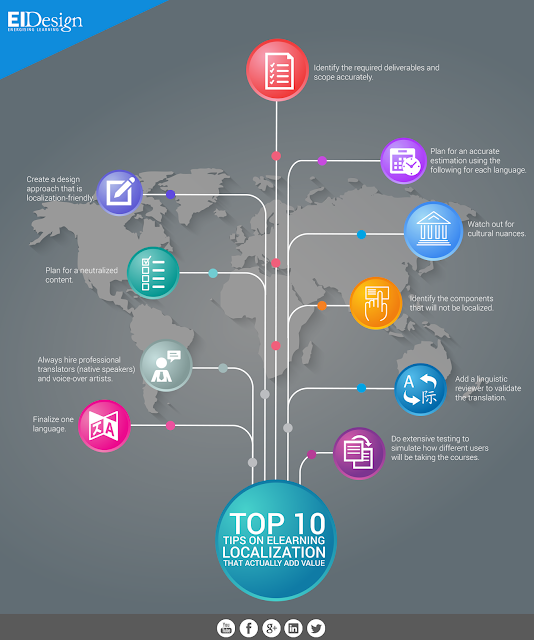A recent study by Microsoft* pegs the human attention span to 8 seconds while a goldfish is believed to have an attention span of 9 seconds. Interestingly, the same study indicates that the ability of humans to multitask has improved. With the percentage of millennials increasing in the global workforce, these pointers clearly reflect a challenge that HCM and L&D professionals need to address to retain the effectiveness of training and its eventual application on the job.
In this article, I will share insights on how Microlearning based training can come to your rescue and help you provide a high impact training approach that will resonate with your learners.
What is Microlearning?
How often have you stumbled upon a web page or article looking for some information and hit the close button after having barely read a paragraph or noticing that the piece is too lengthy? Why? Was the material not informative? Perhaps it was. Did it fail to grab your attention? Bingo. It did. That’s where Microlearning comes in as more than a handy learning strategy.
Microlearning is a short, focused learning nugget (often 3-5 mins long or shorter) that is designed to meet a specific learning outcome. It can be used to offer formal training but it often finds a wider usage in informal training (with a focus on performance gain).
Typically designed and delivered in rich media formats, it is a learner-centric approach that provides just-in-time training that is available on multiple devices (extending to Tablets and Smartphones besides Desktops and Laptops). All these aspects ensure that the microcontent that it offers can be easily accessed, quickly completed and applied by the learners.
Due to its short run length, rich media and availability on Smartphones, it resonates well with the millennial workforce.
What are the benefits of Microlearning?
There are several benefits of Microlearning. Let’s take a look at these from both learner as well as business perspectives.
Benefits for learners
- Learner-centric: Microlearning nuggets appeal to learners as they empower them and give a higher control in defining a personalised and flexible learning path. The varied formats used to create these microcontent nuggets are more likely to match individual learning styles.
- Just-in-time: This is probably the biggest benefit for the learners. These nuggets are available to them precisely at the moment of their learning need. They are also available on demand (learners can pull them rather than being pushed into going through them).
- Accessible: Microlearning can be designed for multi-device delivery (from Desktops and Laptops to Tablets and Smartphones) thereby providing higher flexibility to learners to learn when they need and on the device of their choice.
- Rich media: The design formats of Microlearning include rich media formats that lead to better retention of knowledge.
- Less time consuming: Microlearning is ideal for adult learners with shorter attention span. The shorter run length also appeals to millennial learners.
Benefits for business
- Affordable and agile: Due to short training duration, the Microlearning costs are lower than traditional eLearning. They can be created and deployed much quicker than traditional eLearning.
- Shorter development cycle: On account of the run length and the typical formats used to develop Microlearning, these assets have a much shorter development cycle.
- Easy to update: Microlearning nuggets can be updated and corrected quickly to enhance their impact.
- Wider application: Microlearning can be applied for formal learning or asPerformance Support Tools (PSTs). You can use these nuggets as stand-alone assets or they could be part a series of Microlearning courses.
- High impact: By definition, Microlearning nuggets are designed to meet a narrow but specific outcome. This has a positive impact on learning and application. They can be used very effectively to bring about behavioural change.
Where does Microlearning find a fit in an organisation’s training?
Microlearning can be used very effectively to create sticky learning experiences thereby flipping the “Forgetting Curve” to a “Retention Curve”. This can be achieved by offering Microlearning nuggets in a learning path to:
- Supplement or reinforce the primary, formal training
- Extend formal learning through Performance Support Tools or Just-In-Time learning aids
- Trigger behavioural change (leading to a transformational gain)
How can you use Microlearning?
Take a look at the following 5 Microlearning examples that show how Microlearning can be used for your varied training needs including Soft skills/behavioural change, Compliance and Professional skills.
To give you a feel of how a Microlearning experience would be, we at EI Designhave packaged 5 examples in one of the Microlearning formats.
I hope this article gives you a glimpse of understanding the possibilities of using Microlearning based training. If you have any questions or would like to see how you can transform your existing eLearning to higher impact Microlearning nuggets, do contact us.
* stat reference: http://www.telegraph.co.uk/science/2016/03/12/humans-have-shorter-attention-span-than-goldfish-thanks-to-smart/
















